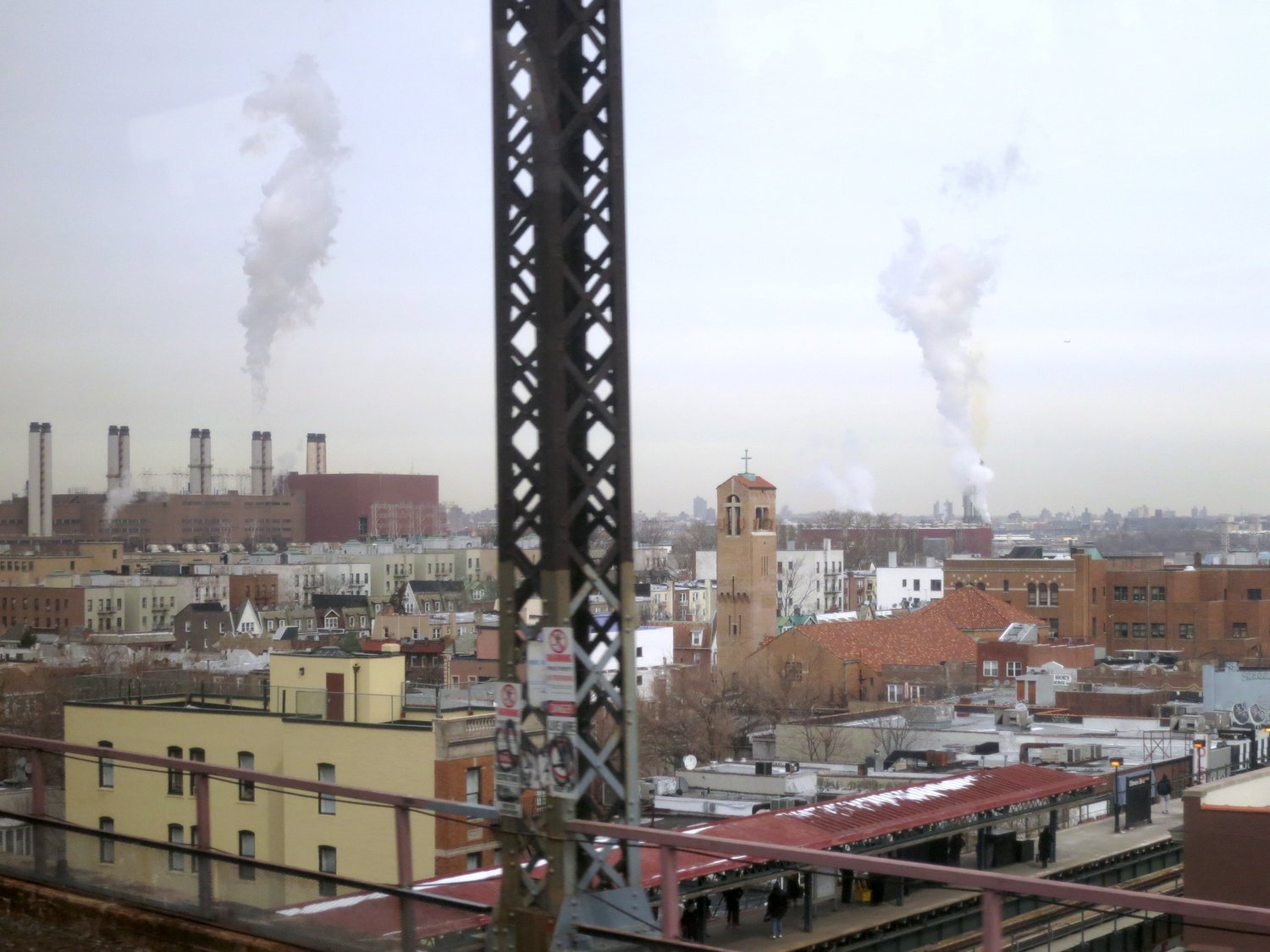host SOLAR ON YOUR ROOFTOP.
SAVE YOUR BUSINESS FROM PENALTIES.
New York City property owners have felt new regulatory pressures in recent months due to a recent Building Emissions Reduction bill passed by the City council. The law, officially titled Local Law 97 (“LL97”) or the Climate Mobilization Act, sets a carbon emissions cap for buildings with a gross area greater than 25,000 sqft.
While the legislation will help reduce the city’s air and climate pollution particularly in industrial areas, it does leave the commercial real estate industry uncertain as to how their businesses will be affected by it.
The team here at Ecogy has compiled a list of answers to your most frequently asked questions.
Clouds of smoke rise from industrial buildings in Queens, NY. If these emissions aren’t curbed in the next four years, property owners will face penalties.
Source: Public Good
What does Local law 97 actually regulate?
The goal of LL97 is to achieve a 40% reduction of citywide emissions by 2030. The City Council found that the most practical way to achieve this is by enforcing a carbon emissions cap on buildings with a gross area greater than 25,000 sq ft.
Emissions will be measured in tons of “Carbon Dioxide Equivalents” (tCO2e). Your tCO2e will be determined from a number of factors including electricity, natural gas, fuel oil, and district steam usage. This will be determined by a yearly energy assessment by the Office of Building Energy and Emissions Performance.
The emissions cap will vary based on two factors: gross area and occupancy zone. This means that larger buildings will have more room to emit.
For more information on your building’s use and occupancy classification, please click here.
What will it cost me?
Business owners could be liable for almost $150,000 in penalties from 2024-2029 and nearly $800,000 from 2030-2034 as penalties ramp up.
This estimate and calculator are strictly for informational purposes only. Ecogy does not hold any claims or responsibilities for the accuracy of this estimate.*
When will the bill take affect?
While property owners are encouraged to begin reducing their emissions as soon as possible, penalties will not begin until January 1, 2024. Starting then, all buildings which have emissions caps will have their energy usage audited.
What Are the penalties for non-compliance?
For every tCO2e that a building emits over their emissions cap, a penalty of no more than $268 will be charged to the property owner.
Thus, buildings in occupancy groups with lower emissions caps will face larger fines. These include manufacturing, retail, business, and residential facilities.
is solar an appropriate alternative for emissions?
Yes! LL97 considers “solar photovoltaics” a clean distributed energy source. A property owner will be able to receive a deduction from their emissions limit requirement when demonstrating the purchase of renewable energy credits or through the consumption of clean distributed energy resources.
how should building owners prepare for the implementation of local law 97?
Ecogy believes that two of the best ways to offset fees are through on-site solar production and energy monitoring.
Solar generation can offset your building’s emissions, helping you avoid penalties while providing you with an additional revenue stream from Ecogy’s site lease payments.
Because Ecogy can fully finance, own, and operate your rooftop system, we have every incentive to use the highest quality technology and equipment in order to maximize the generation from your rooftop.
Additionally, Ecogy is pleased to offer next-generation commercial energy monitoring services through our Econode product.
Using real-time monitoring software, we can help you track your building’s inefficient energy usage and streamline your energy audit experience, leading to increased long-run savings.

